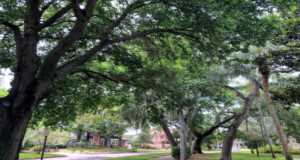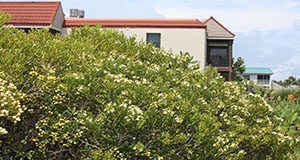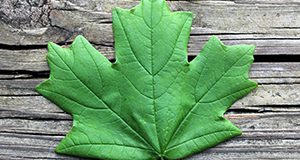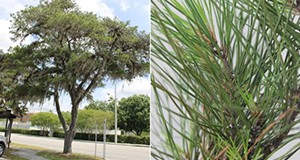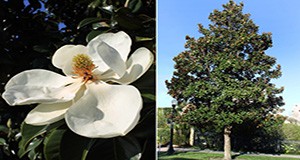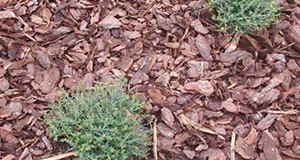This new 13-page article combines canopy coverage data from all of Florida’s metropolitan and micropolitan areas with ecological models developed by the USDA Forest Service to calculate several key benefits of urban trees and an approximation of their monetary value. Benefits of urban trees include carbon sequestration/storage, air pollution filtration, and stormwater mitigation. Written by Drew C. McLean, Andrew K. Koeser, Deborah R. Hilbert, Shawn Landry, Amr Abd-Elrahman, Katie Britt, Mary Lusk, Michael G. Andreu, and Robert J. Northrop, and published by the UF/IFAS Environmental Horticulture Department.
https://edis.ifas.ufl.edu/ep595
Tag: Andrew K. Koeser
How Much Space Does My Shade Tree Need? Planting Space Recommendations for Medium and Large Trees in Florida Cities
Trees provide urban landscapes with shade, beauty, and habitat. They can also help lessen the effects of flooding and urban heat buildup while storing carbon dioxide, a major greenhouse gas. When planted in the wrong place, however, trees can damage urban infrastructure. To maximize the benefits provided by urban trees, we need better-informed tree selection and larger planting spaces with the capacity to support big-canopy trees. This new 8-page fact sheet is intended to help arborists, urban foresters, landscape designers, landscapers, and anyone else responsible for the planting of trees in developed areas make informed decisions regarding the planting width requirements of the trees they select. Written by Deborah R. Hilbert, Andrew K. Koeser, Brooke L. Moffis, JuWanda G. Rowell, and Drew C. McLean, and published by the UF/IFAS Environmental Horticulture Department.
https://edis.ifas.ufl.edu/ep592
Urban Tree Selection for Diversity
Urban tree diversity is important when attempting to create a healthy, beneficial, and resilient urban forest. Having a variety of trees can increase the aesthetic value for residents and create habitats for plants and animals. Some common street trees currently in the landscape are not site-appropriate and create infrastructure damage. By planting different types of trees in these locations, maintenance costs and infrastructure damage can be reduced and tree longevity increased. This new 4-page fact sheet is intended to provide urban foresters, arborists, landscape designers, and others in charge of tree planting with a process for introducing new species into the urban environment. Written by Deborah R. Hilbert, Andrew K. Koeser, and Robert J. Northrop, and published by the UF/IFAS Environmental Horticulture Department.
https://edis.ifas.ufl.edu/ep589
Sea Lavender (Heliotropium gnaphalodes L.): Identification and Uses
Sea lavender is a native plant found naturally along the Atlantic coast of central and south Florida. This 7-page document discusses this species’ identification and uses. Written by Stephen H. Brown, Marc S. Frank, and Andrew K. Koeser and published by the UF/IFAS Environmental Horticulture Department, August 2018.
http://edis.ifas.ufl.edu/ep563
Joewood (Jacquinia keyensis): Identification and Uses
Jacquinia keyensis, known commonly as joewood, is listed as a threatened species by the state of Florida, and is most commonly found in the Florida Keys. This 8-page document discusses the identification and uses of joewood. Written by Stephen H. Brown, Marc S. Frank, and Andrew K. Koeser and published by the UF/IFAS Department of Environmental Horticulture, January 2018.
http://edis.ifas.ufl.edu/ep548
How to Use a Dichotomous Key: A Tutorial Featuring 10 Common Shade Trees of the Tampa Bay Area
A dichotomous key is a tool used to help identify an unknown organism. This twelve-page fact sheet features a key of leaf characteristics for ten common broadleaf trees in the Tampa Bay Area. Accurately navigating this series of paired, either-or choices about leaf characteristics will lead the reader to identify the correct tree from the group of ten. Written by Andrew K. Koeser, Gitta Hasing, Michael G. Andreu, and Melissa H. Friedman and published by the Environmental Horticulture Department.
http://edis.ifas.ufl.edu/ep510
10 Common Palms of the Tampa Bay Area
Palms often serve as key specimens in urban landscape designs. Despite this, their identity is often unknown to Florida’s new, seasonal, and even long-term residents. This ten-page fact sheet serves as a quick reference for some of the most common palms found in North and Central Florida and the Tampa Bay Area in particular. Written by Gitta Hasing, Andrew K. Koeser, Melissa H. Friedman, and Timothy K. Broschat and published by the Environmental Horticulture Department.
http://edis.ifas.ufl.edu/ep506
Ten Common Conifers of the Tampa Bay Area
Conifers are cone-bearing trees often identified by their needles. In addition to their value as landscape trees and lumber and paper sources, they are popular around the holidays as Christmas trees.
This 6-page guide written by Andrew K. Koeser, Holly Finley, Gitta Hasing, Gary W. Knox, and Melissa H. Friedman and published by the Environmental Horticulture Department will assist you in identifying the 10 most common conifers that grow in the Tampa Bay area of Florida. It is an efficient resource for master gardeners, novice tree inventory crews, 4-H forestry teams, and others interested in basic conifer identification.
Ten Common Flowering Trees of the Tampa Bay Area
Blooming trees serve as key focal points in the urban landscape. Florida’s flowering trees can be quite spectacular and leave you wondering, Wow, what tree is that?
This 7-page guide written by Gitta Hasing, Andrew K. Koeser, Gary W. Knox, and Melissa H. Friedman and published by the Environmental Horticulture Department will assist you in identifying the 10 most common flowering trees that grow in the Tampa Bay area of Florida. It is an efficient resource for master gardeners, novice tree inventory crews, 4-H forestry teams, and others interested in basic flowering tree identification.
edis.ifas.ufl.edu/ep505
Improving Weed Control in Landscape Planting Beds
Because landscape beds often contain a variety of ornamental plants, shrubs, and trees, using herbicides to control weeds in these areas can be challenging; however, non-herbicidal methods can be labor intensive. This 6-page fact sheet outlines how to use landscape design and cultural and chemical practices to effectively control weeds in landscape beds. This publication also discusses the use of pre- and postemergent herbicides. Written by Chris Marble and Andrew Koeser, and published by the UF Department of Environmental Horticulture, June 2015.
http://edis.ifas.ufl.edu/ep523
BOOKSTORE: SP 496 Trees: North & Central Florida ($24.95)
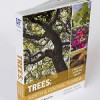 This sturdy, pocket-sized field guide–the only one of its kind for north and central Florida–is designed for landscape professionals, arborists, naturalists, gardeners, and anyone seeking to know the trees around them. Full color photographs of leaves, bark, flowers and full trees, together with clear descriptions and other information make identifying trees easier than ever. The book also features a handy diagnostic key, an introduction to plant parts, a glossary and a ruler to guide you, whether you’re a trained botanist or a total beginner. This field guide to 140 common tree species is written by Andrew Koeser, Gitta Hasing, Melissa Friedman, and Robert Irving and published by UF/IFAS. Available only at the UF/IFAS Extension Bookstore.
This sturdy, pocket-sized field guide–the only one of its kind for north and central Florida–is designed for landscape professionals, arborists, naturalists, gardeners, and anyone seeking to know the trees around them. Full color photographs of leaves, bark, flowers and full trees, together with clear descriptions and other information make identifying trees easier than ever. The book also features a handy diagnostic key, an introduction to plant parts, a glossary and a ruler to guide you, whether you’re a trained botanist or a total beginner. This field guide to 140 common tree species is written by Andrew Koeser, Gitta Hasing, Melissa Friedman, and Robert Irving and published by UF/IFAS. Available only at the UF/IFAS Extension Bookstore.
Is My Tree Safe? Recognizing Conditions that Increase the Likelihood of Tree Failure
 Urban trees provide shade and beauty and the urban forest as a whole provides a wealth of benefits to neighborhoods and residents. But stresses from the urban environment may lead to problems that pose an unacceptable safety risk to people and property. It is a landowner’s responsibility to ensure that the trees on their property are safe. A key step in reducing the potential for tree-related injury or property damage is learning to identify common tree defects associated with increased risk of failure. This 5-page fact sheet highlights seven easily reconizable tree defects that homeowners and non-professionals in public agencies. may encounter in Florida. Written by Drew C. McLean, Andrew K. Koeser, Robert J. Northrop, and Gitta Hasing, and published by the UF Department of Environmental Horticulture, October 2014. (Photo by Gitta Hasing)
Urban trees provide shade and beauty and the urban forest as a whole provides a wealth of benefits to neighborhoods and residents. But stresses from the urban environment may lead to problems that pose an unacceptable safety risk to people and property. It is a landowner’s responsibility to ensure that the trees on their property are safe. A key step in reducing the potential for tree-related injury or property damage is learning to identify common tree defects associated with increased risk of failure. This 5-page fact sheet highlights seven easily reconizable tree defects that homeowners and non-professionals in public agencies. may encounter in Florida. Written by Drew C. McLean, Andrew K. Koeser, Robert J. Northrop, and Gitta Hasing, and published by the UF Department of Environmental Horticulture, October 2014. (Photo by Gitta Hasing)
http://edis.ifas.ufl.edu/ep507
Advanced Tree Risk Assessment: Resistance Recording Drills
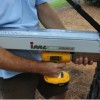 Resistance recording drills are specialized pieces of decay detection equipment that may be used as part of an advanced risk assessment. While not required for tree risk assessment work, resistance recording drills have been shown to be effective in helping arborists detect and document internal tree decay in trees. This 5-page fact sheet was written by Drew McLean, Andrew Koeser, and Gitta Hasing, and published by the UF Department of Environmental Horticulture, October 2014.
Resistance recording drills are specialized pieces of decay detection equipment that may be used as part of an advanced risk assessment. While not required for tree risk assessment work, resistance recording drills have been shown to be effective in helping arborists detect and document internal tree decay in trees. This 5-page fact sheet was written by Drew McLean, Andrew Koeser, and Gitta Hasing, and published by the UF Department of Environmental Horticulture, October 2014.
http://edis.ifas.ufl.edu/ep504
Incorporating Woody Ornamentals into Residential Landscapes to Reduce Nutrient Leaching
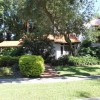 Urban landscapes in Florida are typically dominated by turfgrass monoculture, with ornamental landscape plants comprising only a small portion of the landscape. Incorporating more woody ornamentals into your landscape can reduce fertilization and irrigation demand and help reduce nutrient leaching losses from your yard—a combination that will help protect Florida’s water resources. This 3-page fact sheet was written by Drew C. McLean, Andrew K. Koeser, Amy L Shober, Zhixuan Qin, Gitta Hasing, and Richard C. Beeson, and published by the UF Department of Environmental Horticulture, July 2014.
Urban landscapes in Florida are typically dominated by turfgrass monoculture, with ornamental landscape plants comprising only a small portion of the landscape. Incorporating more woody ornamentals into your landscape can reduce fertilization and irrigation demand and help reduce nutrient leaching losses from your yard—a combination that will help protect Florida’s water resources. This 3-page fact sheet was written by Drew C. McLean, Andrew K. Koeser, Amy L Shober, Zhixuan Qin, Gitta Hasing, and Richard C. Beeson, and published by the UF Department of Environmental Horticulture, July 2014.
http://edis.ifas.ufl.edu/ep503
Plumeria: Propagation from Cuttings
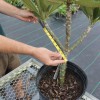 Plumeria are flowering ornamentals native to the Caribbean, Mexico, Central America, Venezuela, and Colombia. Highly valued for their colorful flowers, plumeria are now grown in tropical and subtropical areas throughout the world. Plumeria, or frangipani, are members of the Apocynaceae family. Unless steps are taken to prevent frost damage, plumeria are generally limited to landscape uses in south Florida and protected regions of central Florida. This 5-page fact sheet was written by Andrew K. Koeser, Gitta Hasing, and Drew McLean, and published by the UF Department of Environmental Horticulture, October 2013.
Plumeria are flowering ornamentals native to the Caribbean, Mexico, Central America, Venezuela, and Colombia. Highly valued for their colorful flowers, plumeria are now grown in tropical and subtropical areas throughout the world. Plumeria, or frangipani, are members of the Apocynaceae family. Unless steps are taken to prevent frost damage, plumeria are generally limited to landscape uses in south Florida and protected regions of central Florida. This 5-page fact sheet was written by Andrew K. Koeser, Gitta Hasing, and Drew McLean, and published by the UF Department of Environmental Horticulture, October 2013.
http://edis.ifas.ufl.edu/ep489
Tree Risk Assessment Methods: A Comparison of Three Common Evaluation Forms
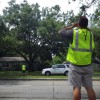 All trees pose some level of risk to nearby people, structures, and utilities. As trees age or become weakened by pests, disease, and/or other stresses, a tree owner or manager may need to decide what risk level he or she is willing to accept and what modifications may be needed. Experienced arborists can aid in this decision process by conducting a professional risk assessment that specifies the likelihood of whole or partial tree failure, the consequences of such a failure, and the potential targets affected. A variety of risk assessment methods have been developed to guide professionals through the tree inspection process. In North America, three risk assessment methods have gained the greatest acceptance among tree care professionals, municipal urban forestry programs, and government agencies. This 8-page fact sheet was written by Andrew K. Koeser, Gitta Hasing, Drew McLean, and Rob Northrop, and published by the UF Department of Environmental Horticulture, November 2013.
All trees pose some level of risk to nearby people, structures, and utilities. As trees age or become weakened by pests, disease, and/or other stresses, a tree owner or manager may need to decide what risk level he or she is willing to accept and what modifications may be needed. Experienced arborists can aid in this decision process by conducting a professional risk assessment that specifies the likelihood of whole or partial tree failure, the consequences of such a failure, and the potential targets affected. A variety of risk assessment methods have been developed to guide professionals through the tree inspection process. In North America, three risk assessment methods have gained the greatest acceptance among tree care professionals, municipal urban forestry programs, and government agencies. This 8-page fact sheet was written by Andrew K. Koeser, Gitta Hasing, Drew McLean, and Rob Northrop, and published by the UF Department of Environmental Horticulture, November 2013.
http://edis.ifas.ufl.edu/ep487
